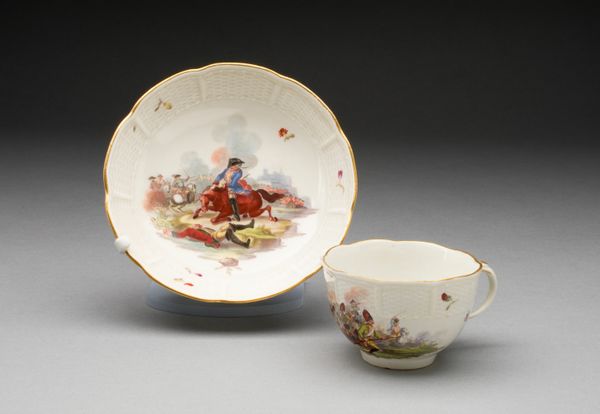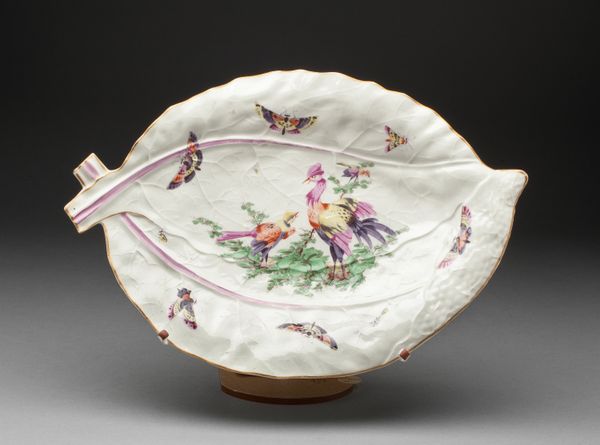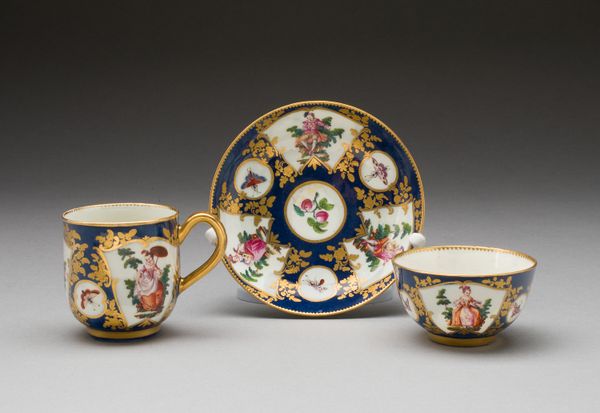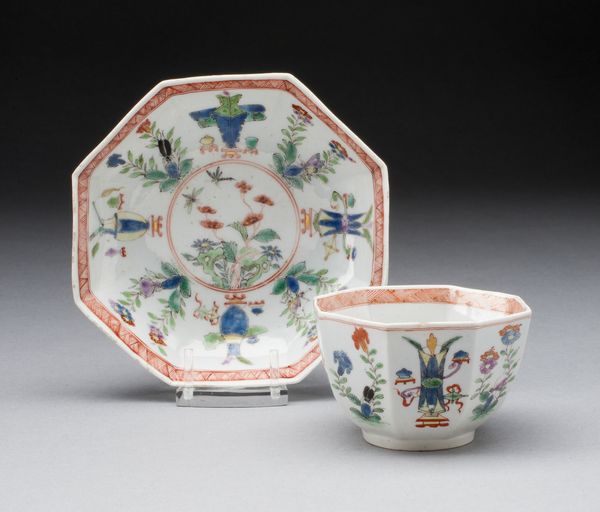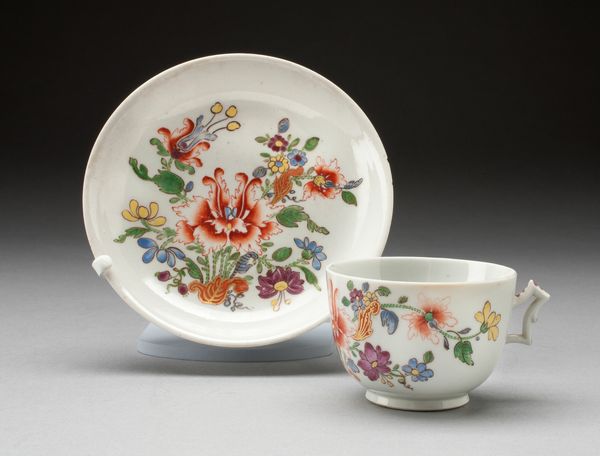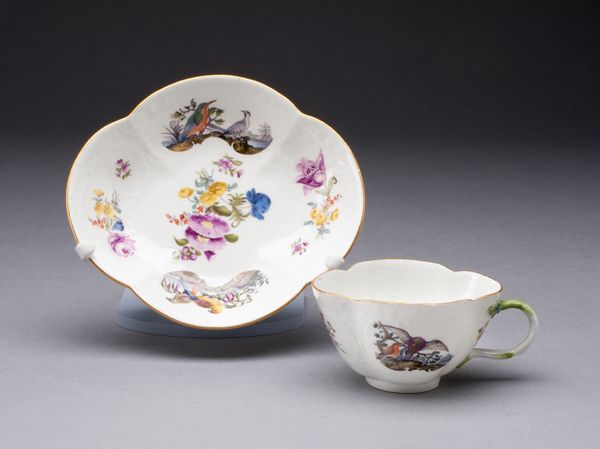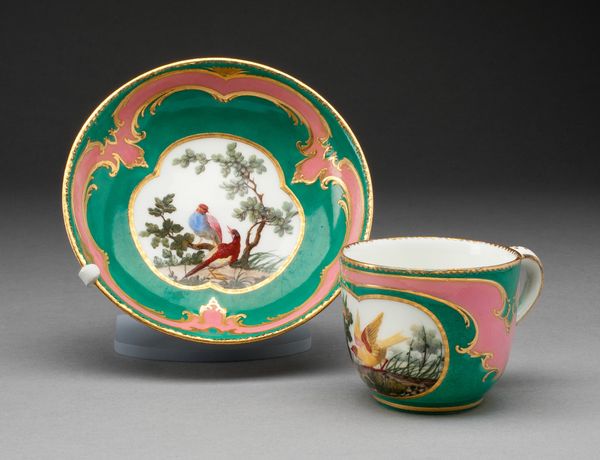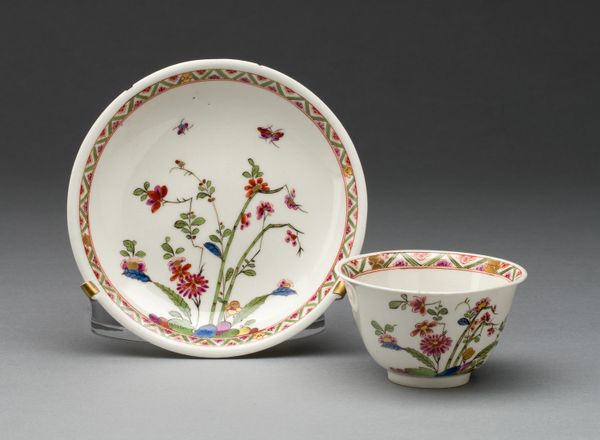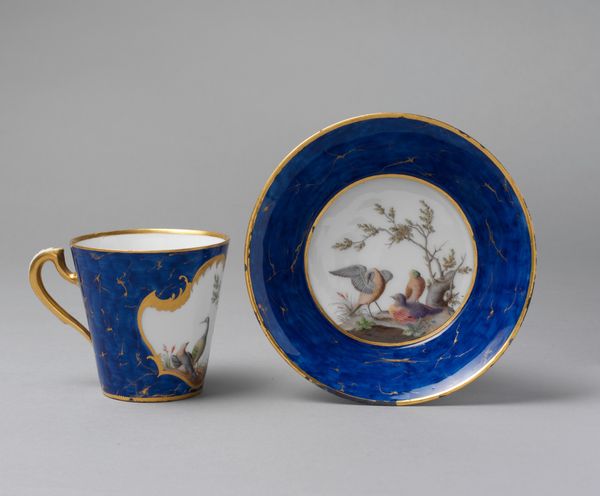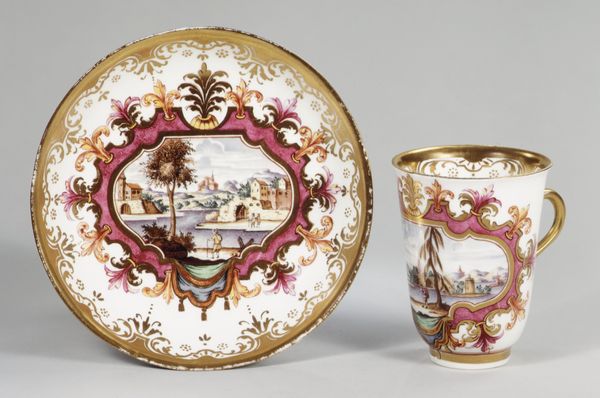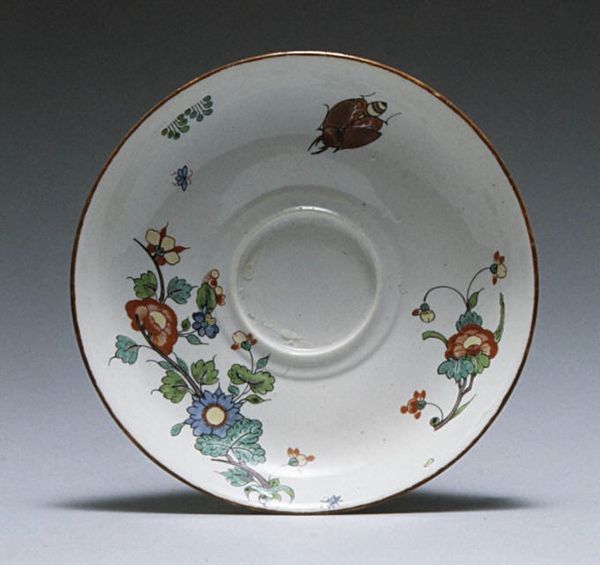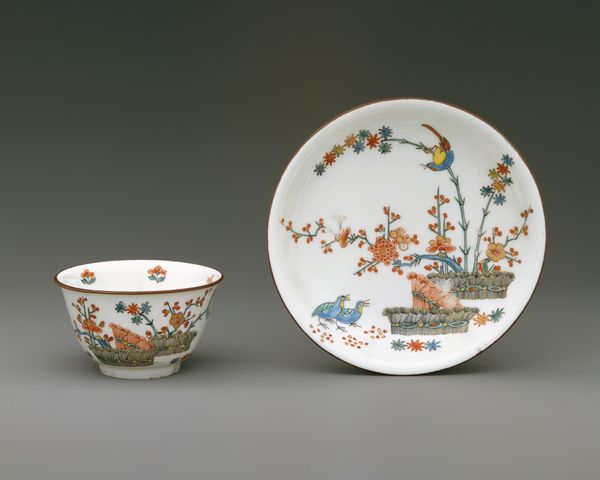
painting, ceramic, porcelain
#
painting
#
landscape
#
ceramic
#
porcelain
#
ceramic
#
genre-painting
#
decorative-art
Dimensions: H. 22.9 cm (9 in.); diam. at lip: 12.4 cm (4 5/6 in.)
Copyright: Public Domain
Curator: The Jug before us, crafted by the Worcester Royal Porcelain Company around 1765, presents such an interesting synthesis of form and decoration. Editor: It does. My immediate reaction is of a pastoral dream, softened by the delicate palette, the rounded shape, and whimsical additions, such as the small figure worked into the lip of the jug. Curator: Indeed, the production techniques and division of labor must have been quite involved. Consider the source of the kaolin clay, its refinement, and the throwing, firing, glazing, and painting of these delicate landscape scenes in enamels, quite fashionable at the time. Editor: Focusing on the images, notice the idealized scenes: cows being milked under a tree. They are framed in these elaborate cartouches. And then consider how they play against the floral decoration across the upper section, and the face emerging from the spout. How does the combination of geometry, figuration, and the softness of landscape work formally? Curator: The jug form itself alludes to classical shapes but reinterprets them through the rococo sensibility with its elaborate handle. The scenes themselves reflect the growing trend towards romanticizing rural life, but its placement on functional tableware designed for consumption reveals the jug as a luxury good. It would likely be used for milk, itself a product of agrarian labor and often signifying purity or innocence in artwork, in more elite social settings. Editor: Precisely, but beyond this specific context, what I see here is the play between flatness and volume: these pastoral scenes have been reduced to only a few hues, flattened within these bordered vignettes. I’m curious how these shapes and the selected colours generate such a light feeling for the object overall. Curator: Looking at the way this jug was fabricated allows us to trace trade routes, the availability of materials, the specializations involved in its making, and how they are linked to specific artistic tastes and modes of consumption in Georgian society. Editor: Absolutely, and tracing those patterns back into the visual experience helps sharpen how and why such items appeal to the human eye, and perhaps even the hand.
Comments
No comments
Be the first to comment and join the conversation on the ultimate creative platform.

